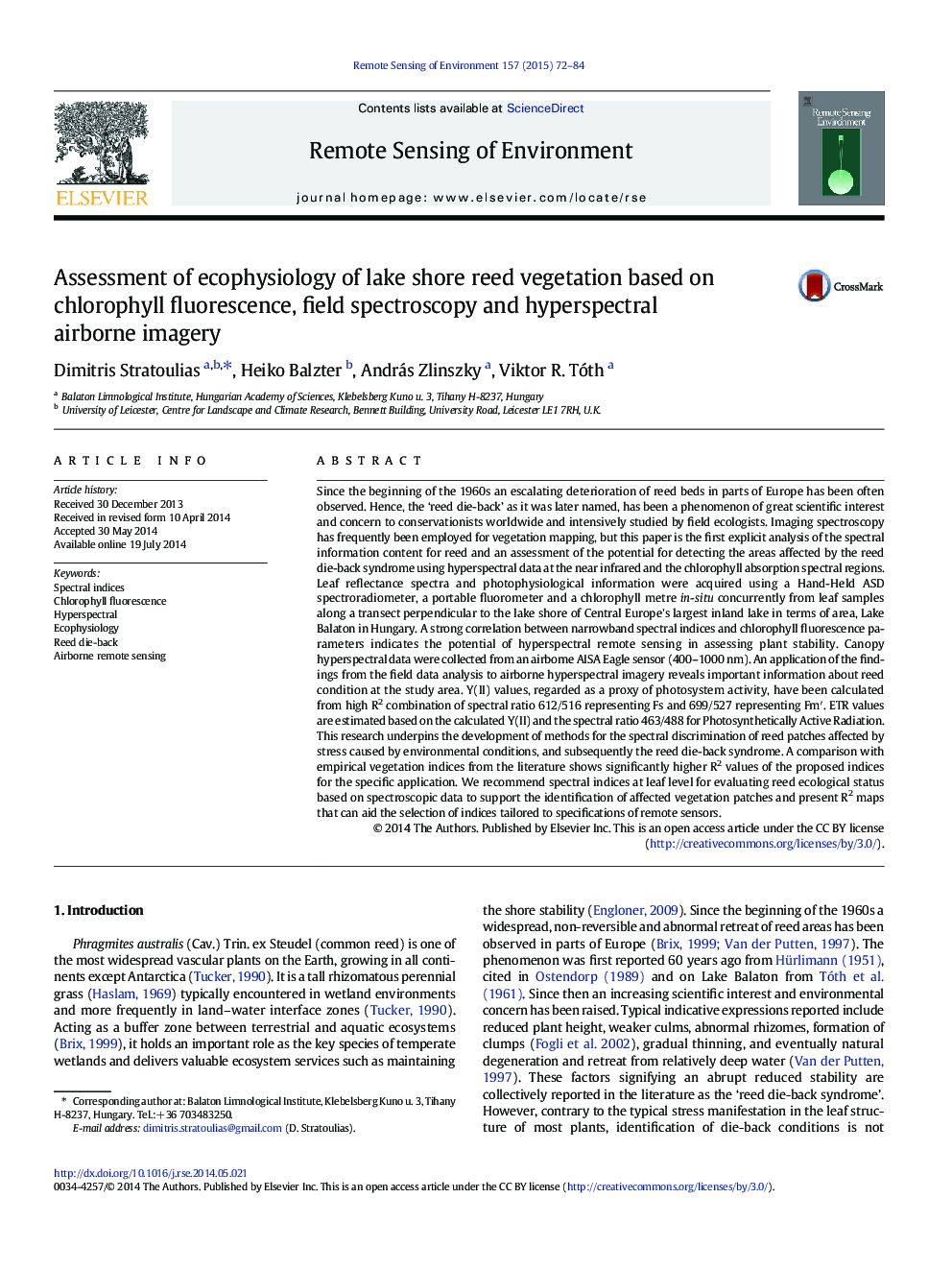| کد مقاله | کد نشریه | سال انتشار | مقاله انگلیسی | نسخه تمام متن |
|---|---|---|---|---|
| 6346474 | 1621243 | 2015 | 13 صفحه PDF | دانلود رایگان |
عنوان انگلیسی مقاله ISI
Assessment of ecophysiology of lake shore reed vegetation based on chlorophyll fluorescence, field spectroscopy and hyperspectral airborne imagery
ترجمه فارسی عنوان
ارزیابی اکوفیزیولوژی پوشش گیاهی ساحلی دریاچه ساحلی بر اساس فلورسانس کلروفیل، طیف سنجی زمینه و تصاویر پرتوی هیبرید در هوا
دانلود مقاله + سفارش ترجمه
دانلود مقاله ISI انگلیسی
رایگان برای ایرانیان
کلمات کلیدی
شاخص های طیفی، فلورسانس کلروفیل، بیش از حد، اکوفیزیولوژی، رید جان عقب، سنجش از دور با هوا،
موضوعات مرتبط
مهندسی و علوم پایه
علوم زمین و سیارات
کامپیوتر در علوم زمین
چکیده انگلیسی
Since the beginning of the 1960s an escalating deterioration of reed beds in parts of Europe has been often observed. Hence, the 'reed die-back' as it was later named, has been a phenomenon of great scientific interest and concern to conservationists worldwide and intensively studied by field ecologists. Imaging spectroscopy has frequently been employed for vegetation mapping, but this paper is the first explicit analysis of the spectral information content for reed and an assessment of the potential for detecting the areas affected by the reed die-back syndrome using hyperspectral data at the near infrared and the chlorophyll absorption spectral regions. Leaf reflectance spectra and photophysiological information were acquired using a Hand-Held ASD spectroradiometer, a portable fluorometer and a chlorophyll metre in-situ concurrently from leaf samples along a transect perpendicular to the lake shore of Central Europe's largest inland lake in terms of area, Lake Balaton in Hungary. A strong correlation between narrowband spectral indices and chlorophyll fluorescence parameters indicates the potential of hyperspectral remote sensing in assessing plant stability. Canopy hyperspectral data were collected from an airborne AISA Eagle sensor (400-1000Â nm). An application of the findings from the field data analysis to airborne hyperspectral imagery reveals important information about reed condition at the study area. Y(II) values, regarded as a proxy of photosystem activity, have been calculated from high R2 combination of spectral ratio 612/516 representing Fs and 699/527 representing Fmâ². ETR values are estimated based on the calculated Y(II) and the spectral ratio 463/488 for Photosynthetically Active Radiation. This research underpins the development of methods for the spectral discrimination of reed patches affected by stress caused by environmental conditions, and subsequently the reed die-back syndrome. A comparison with empirical vegetation indices from the literature shows significantly higher R2 values of the proposed indices for the specific application. We recommend spectral indices at leaf level for evaluating reed ecological status based on spectroscopic data to support the identification of affected vegetation patches and present R2 maps that can aid the selection of indices tailored to specifications of remote sensors.
ناشر
Database: Elsevier - ScienceDirect (ساینس دایرکت)
Journal: Remote Sensing of Environment - Volume 157, February 2015, Pages 72-84
Journal: Remote Sensing of Environment - Volume 157, February 2015, Pages 72-84
نویسندگان
Dimitris Stratoulias, Heiko Balzter, András Zlinszky, Viktor R. Tóth,
